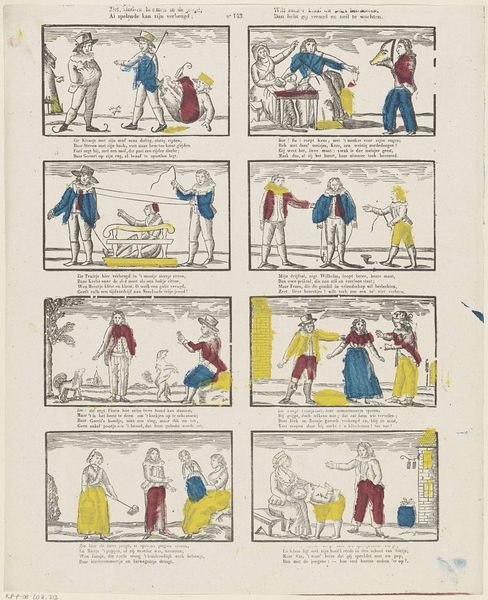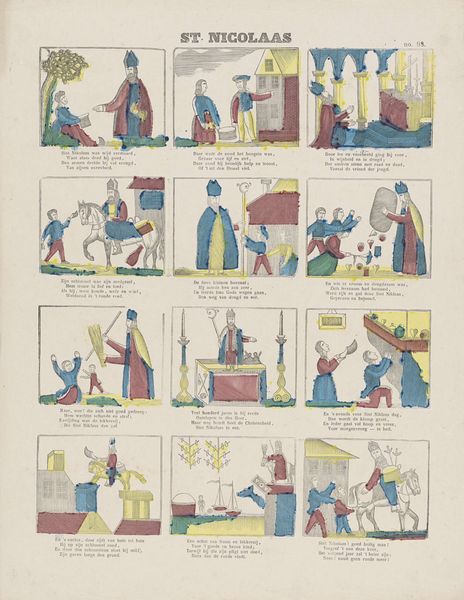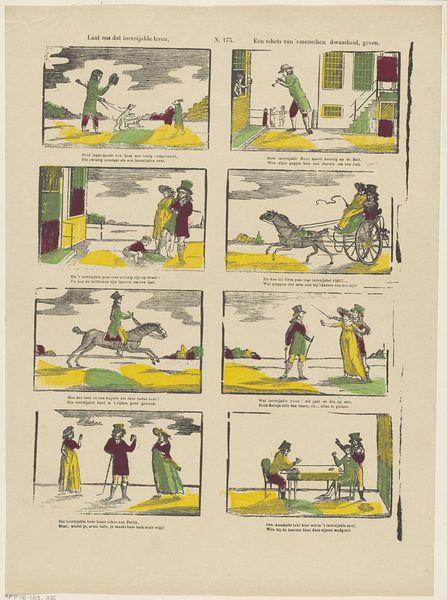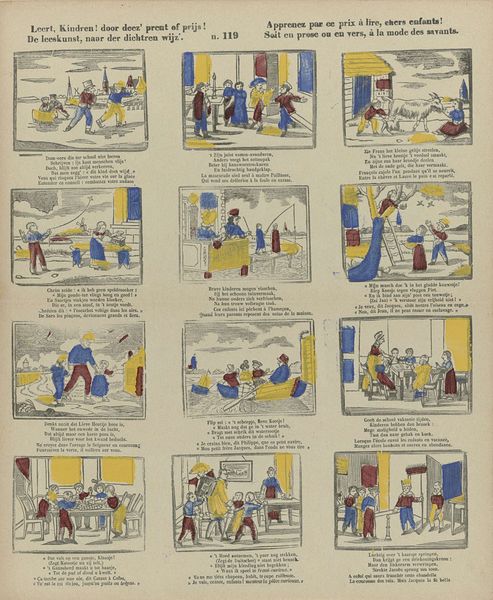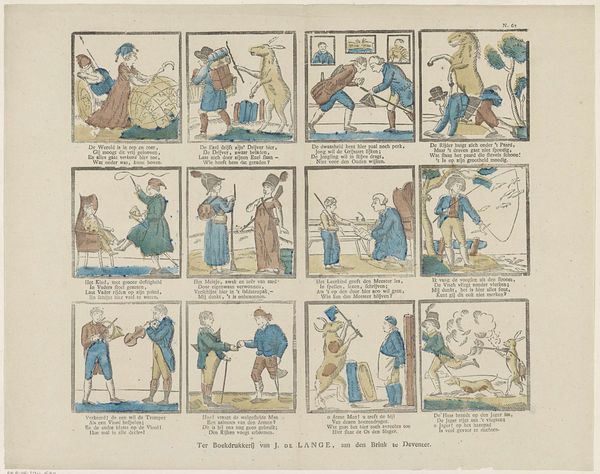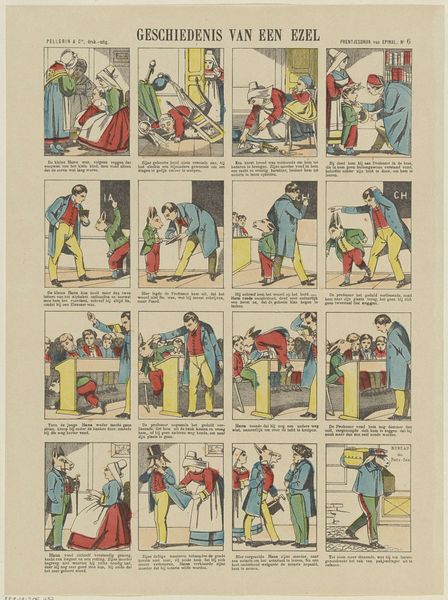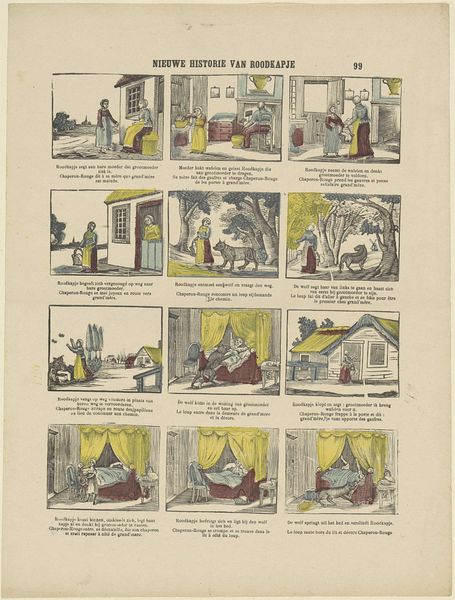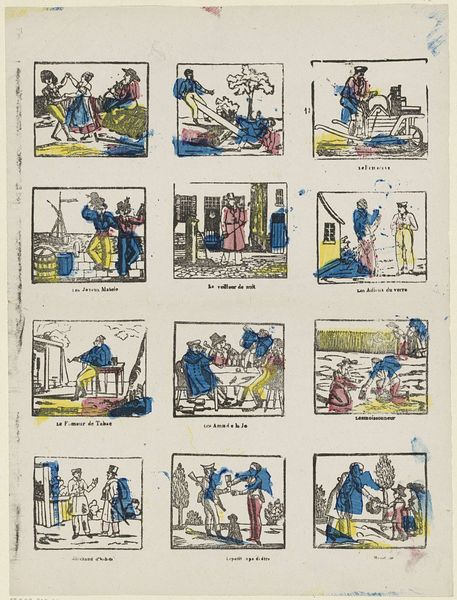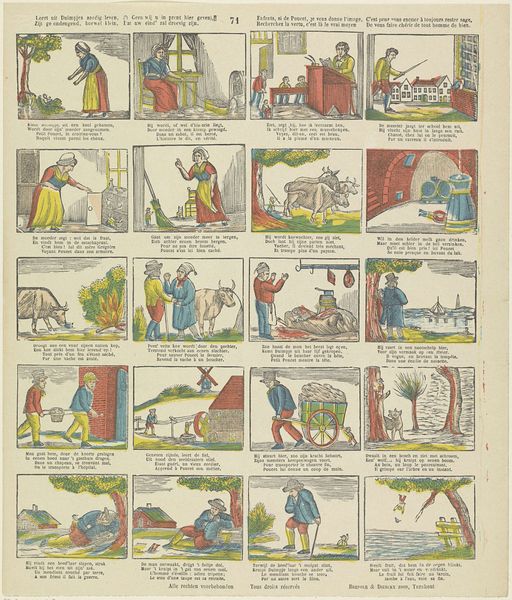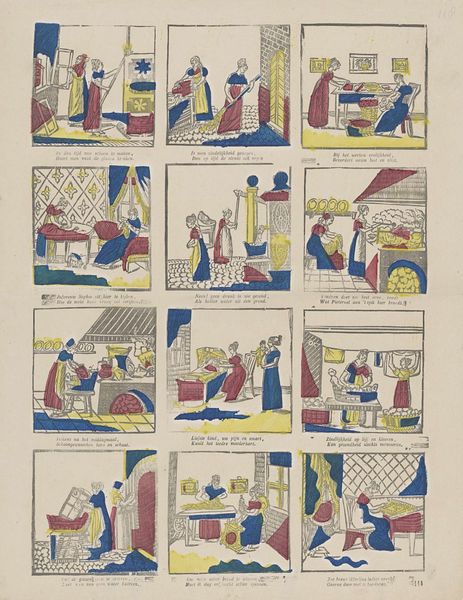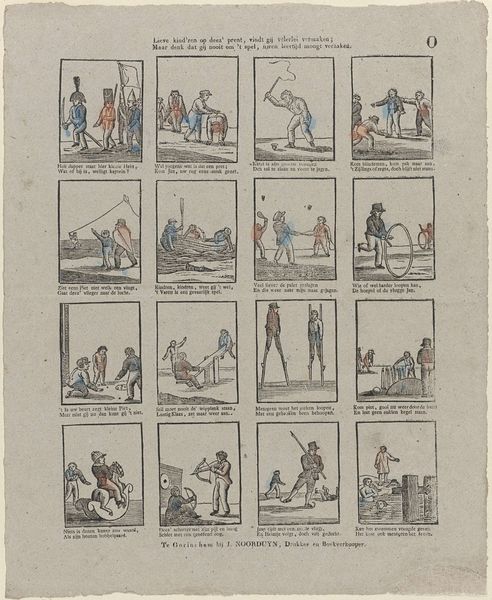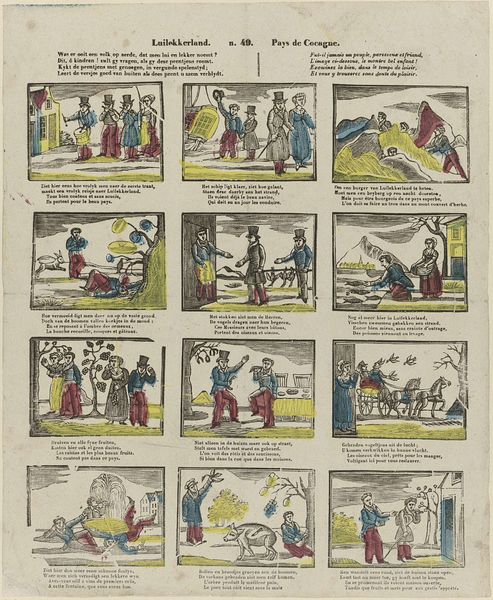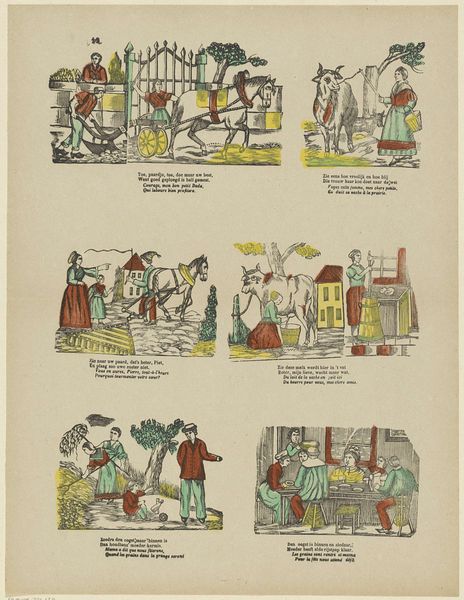
drawing, print
#
drawing
#
narrative-art
# print
#
comic
#
genre-painting
Dimensions: height 413 mm, width 298 mm
Copyright: Rijks Museum: Open Domain
Curator: This is "Kinderbezigheden" by Franciscus Antonius Beersmans, likely created between 1866 and 1902. It's a drawing, also categorized as a print, with elements of comic and genre-painting styles, portraying various children’s activities. Editor: My initial impression is of a series of miniature dramas, frozen in time. Each panel feels like a glimpse into a forgotten era of childhood, rendered with simple yet evocative lines. It evokes a sense of nostalgia and curiosity. Curator: Exactly. Beersmans captured the evolving perceptions of childhood during the late 19th century. The sequential layout suggests the growing popularity of comics, influencing visual storytelling within society. The artwork portrays everyday scenes. Note that childhood starts being regarded not just as preparation for adulthood but as a distinct period with its activities and pastimes. Editor: I notice recurrent imagery across the panels, like the emphasis on small objects - toy windmills, marbles, cooking utensils - all mirroring larger cultural ideas about childhood innocence and domestic life. They almost operate as symbols within each individual vignette, representing small universes. What does it tell us about a world we are now observing? Curator: I would suggest these details reinforce the social narrative of domesticity and industriousness prevalent during the time. Through representations of play and youthful activity, cultural values are actively conveyed. It speaks to society's moralistic teachings. It's not merely documentation, it's construction of societal belief system. Editor: Do you mean, as if those toys serve a double role - didactic elements through the lens of what used to be playful activity? Are we just witnessing leisure, or its sublimated meaning? Curator: Precisely. Art became a tool in that epoch through which children were educated not only in academia but about cultural and moral codes that were the basis of societal operation. Look, for example, how play is staged – with clear gender divisions. This represents not a true depiction but an intent to reinforce values through artwork consumption and display. Editor: Understanding the work through both imagery and historical perspectives allows for decoding those messages the artist meant to pass and understand the time in which it was conceived as well as its influence on culture-shaping patterns. Curator: A nuanced picture of art's role in constructing societal expectations in past eras emerges from analyzing it, along with a critical understanding of our shared memory,
Comments
No comments
Be the first to comment and join the conversation on the ultimate creative platform.
